Let’s say you have a new composition or arrangement and you have found a publisher who wants to publish your piece. It’s really good, and no one else has anything like it! You’re really excited about bringing your great music to musicians. What’s the next step?
Getting to yes: inside a publication agreement
You and your publisher must come to an agreement. The usual arrangement is to pay you a fair royalty in exchange for the copyright for your work. What’s a fair royalty? For sheet music publishers, historically the rate is ten per cent. That doesn’t sound like a lot. Why should you sign on if all you get is ten per cent? And now, lots of music is sold as downloadable files, for which the costs of paper and printing disappear. So why should you get only ten per cent?
Many publishers these days pay rates that depend on the mode of delivery. If it’s traditional paper, the royalty may be less to account for the cost of paper, printing, and warehousing; if it’s a digital download, it could be a little more. It might be that the composer or arranger gets a percentage of the net sales. If an arrangement uses previously copyrighted material, there will be several layers of royalties. The first is to the copyright owner, and the arranger may receive a smaller royalty. If the publisher manages his own sales directly, royalties are the single largest expense. However, if the publisher sells through middle men, that can easily be half of the net sales price. Ascenda Music sells only directly to consumers, avoiding the cost of middle men, and leaving the composer with a larger share.
What else does the composer get for signing on? The composer receives a promise that the publisher will market the composer’s offerings. After all, if the publisher doesn’t make money, the composer won’t make money either. The publisher will take care of producing the product for the consumer. And the publisher will keep track of and pay royalties owed to the composer.
And then the real work begins: engraving and editing
The agreement is signed; the publisher now turns to getting the composer’s work into marketable condition. Every music publisher must use the services of a skilled engraver. Modern publishers use software to create a product that will look similar to music created by the old engraving practice of engraving a mirror image of the music onto metal plates. The modern engraver needs to have training in music theory, music history, orchestration, software use, and printing technology.
But more than those qualifications, the modern engraver needs to be an artist. The music needs to be readable. He has many choices to make about page layout: page turns, spacing, rhythmic notation, fonts. The goal is music that doesn’t require the musician to run to the print shop to make extra copies because of bad page turns. The rhythms need to be notated such that beats are easily discernible. Staff spacing needs to be large enough but not too large. Text directions need to be well-placed so they don’t collide with notes or dynamics.
Paper or plastic? The choice between traditional print music and downloadable digital files
It happens all the time: I go to a concert, and at least half of the musicians are using iPads or other electronic tablets to read the music. But some musicians, both young and old, still prefer to use traditional paper. I believe a music publisher must accommodate the diverse needs of musicians by providing both.
The traditional paper crowd needs high quality paper of the right size, with a finish that is smooth but won’t cause glare. The margins should be adequate and the staves should be far enough apart to allow the musician to make practice and rehearsal notations. The score and parts need to be durable and bound so they lie flat on a music stand or desk. iPad users have many of the same needs, but they also need to have easy access to digital files. They may need specially formatted pdfs to fit their tablet screens.
The green visor: bookkeeping and making a profit
In addition to royalties, the publisher incurs the costs of printing, warehousing, and shipping the products. All publishers also incur the costs of bookkeeping, accounting, legal help, software services, engraving and editing services, and business licenses, whether to employees or independent contractors. To make a profit and stay in business, the publisher needs to understand all these costs and price his products correctly.
Letting the world know you have what they want
Finally, the publisher needs to sell his products. If the publisher sells through dealers, marketing costs are implicit in the deep discount at which the dealers purchase the publisher’s products. If the publisher sells directly to the public, the publisher must assume the costs of marketing.
Getting great music into the hands of you, the performing musician, involves much more than just finding great music. The publisher manages the complex set of tasks so the composer can focus on composing. As Ascenda Music expands our offerings, we hope to continue to be a partner with you in your search for excellent music to program for your concert.









